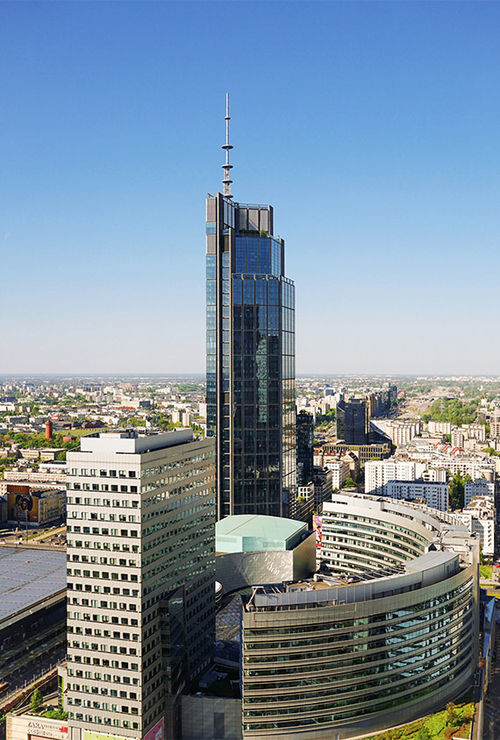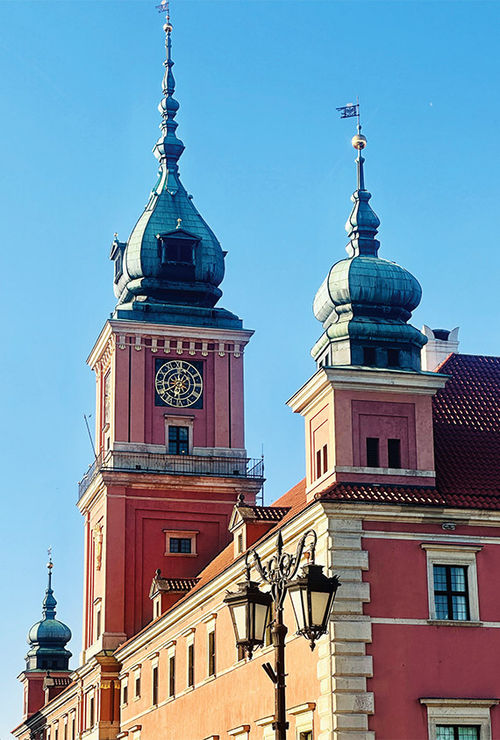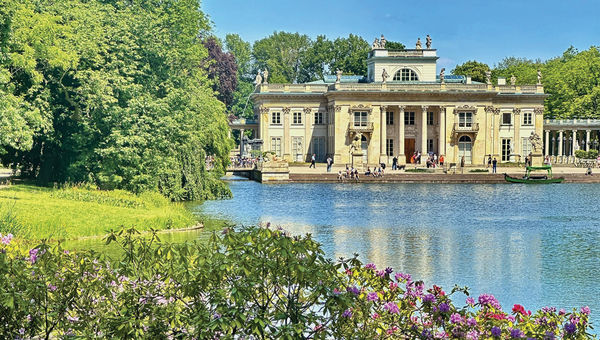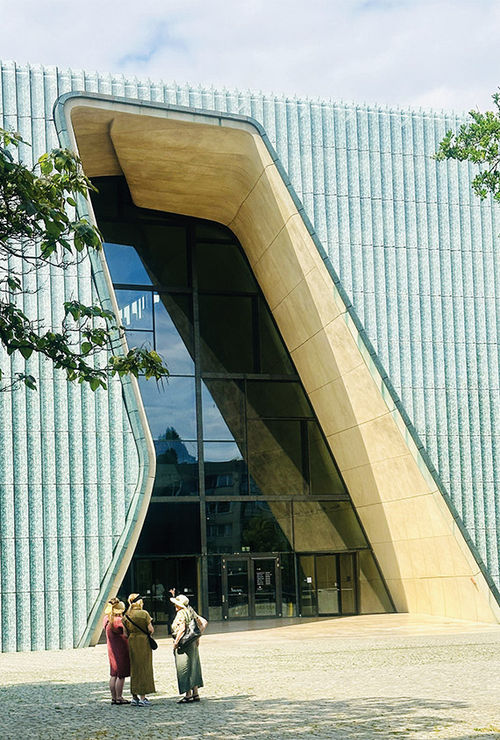Poland's vibrant capital is showing up on more travel lists in 2025, and not just because Warsaw is one of the more affordable European capitals.

Varso Tower, the tallest building in the EU, looms over Warsaw. Photo Credit: Maciej Deperas/@City of Warsaw
As I zipped to the top of Varso Tower in a glass-enclosed elevator, I marveled at the city's evolving landscape. At 1,020 feet, the neomodern structure is the tallest building in the EU.
The 53-story skyscraper's observation deck opens to the public this spring. Finally, visitors can look down on the Palace of Culture and Science, the drab landmark Stalin built as the city's highest building.
Nearby, the new bright-white Museum of Modern Art is also replacing the palace as the city's art and cultural center. Designed by U.S. architect Thomas Phifer, the light-filled museum opened in late 2024 as a symbol of democratic values and openness.
The two additions are the newest reasons to visit Warsaw, but there are plenty of others. The city has Poland's most-respected museums, including the Polin Museum of the History of Polish Jews, which was featured in the Oscar-nominated 2024 film "A Real Pain."
Warsaw is also garnering praise as a green city for its urban parks and mostly pristine banks along the Vistula River. New sidewalks and bike paths are knitting the city together.
And don't underestimate the dining options; the city has a slew of fine restaurants that are attracting Michelin's attention.

Warsaw's Royal Castle, the former seat of Polish rulers and a symbol of Polish independence, is now a popular museum. Photo Credit: Barbara Redding
A lot to like
On a recent visit, I explored what's new as well as the city's historical sites.
Pastel-painted townhouses, Gothic arches and outdoor cafes fill lively Old Town Square. Unless you see the photographs, it's hard to imagine the medieval Old Town reduced to rubble by the Nazis and left to burn by Soviet troops during World War II. The brick-by-brick restoration led the entire area to be designated a Unesco World Heritage Site. The Museum of Warsaw fills several buildings, offering an in-depth history of the city.
A statue of a mermaid, said to be the city's protector, is the square's focal point. It's a picturesque place to snap a selfie and enjoy a glass of wine or a steaming cup of hot chocolate.
From the square, I strolled the Royal Route, which connects the city's royal residences and passes many historical landmarks. The restored 18th century baroque Royal Castle, once the seat of Polish kings and a symbol of Polish independence, is a museum containing Rembrandts and the canvases used by architects as reference in the reconstruction of Warsaw after World War II.

Relaxing in Lazienki Park in front of the Palace on the Isle. Photo Credit: Barbara Redding
Poland's most populous city, with 1.8 million residents, Warsaw is also the country's largest geographically, and it has 80 parks and gardens. Once the haunt of royals in the 17th century, Lazienki Park is where Varsovians escape to walk or run on shady, winding paths.
At its center, a fairy-tale castle looks as if it's floating on a lake. Now a museum, the Palace on the Isle is decorated with treasures from the Polish royal families who summered there. A whimsical monument to Warsaw native and composer Frederic Chopin resides in the park, surrounded by an amphitheater where music fills the air on warm nights. This fall, the Chopin Institute hosts the 19th Chopin International Piano Competition, which brings together the world's finest pianists every five years.
Other museums dedicated to famous Varsovians include the home of the scientist Marie Curie, the first woman to win a Nobel Prize and the only person to win the prize in two scientific fields. The Copernicus Science Center is devoted to the scientist who revolutionized astronomy by proposing that planets orbit around the sun.

The entrance to the Polin Museum of the History of Polish Jews. Photo Credit: Barbara Redding
Rising from the ashes
But the most important museums focus on the country's turbulent history. The Polin and the Warsaw Rising Museum recount the tragic events of World War II. Both can be emotional, so I suggest visiting them on separate days.
The Polin traces Polish history back 1,000 years to when Jews first arrived in Poland, to the Holocaust and today. Located in what became the Warsaw ghetto, the museum's boxy exterior belies expansive rooms inside on multiple floors that flow into one another. Multisensory exhibits illustrate Jewish life in Poland.
Warsaw Rising recounts the underground resistance waged in 1944 against better-equipped German soldiers. Pictures, light and sound re-create the uprising in vivid detail.
Warsaw's urban landscape meets nature on the Vistula's shores, where I wasn't expecting to find sandy beaches. I explored the river on a sightseeing boat, but you can also paddle a kayak. A new pedestrian and cycle bridge connects the city with the Praga neighborhood on the east bank.
A walk around Praga is a visual treat. Artist galleries and underground clubs spill out of tenement buildings undamaged in World War II. The Neon Museum displays an intriguing collection of Cold War-era neon signs. I learned about Poland's 500-year-old love affair with vodka on a fun tasting tour at the Polish Vodka Museum in a restored brick distillery.
I also enjoyed one of my favorite meals in Praga. At cozy Restaurant Zrodlo, I savored organic wines paired with inspired Polish dishes and a plate of local crawfish rivaling any in New Orleans. Warsaw's restaurants are fusing traditional Polish dishes and modern cuisine with flavorful results.